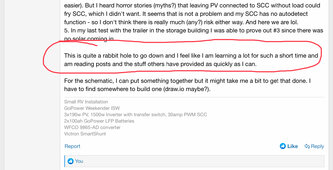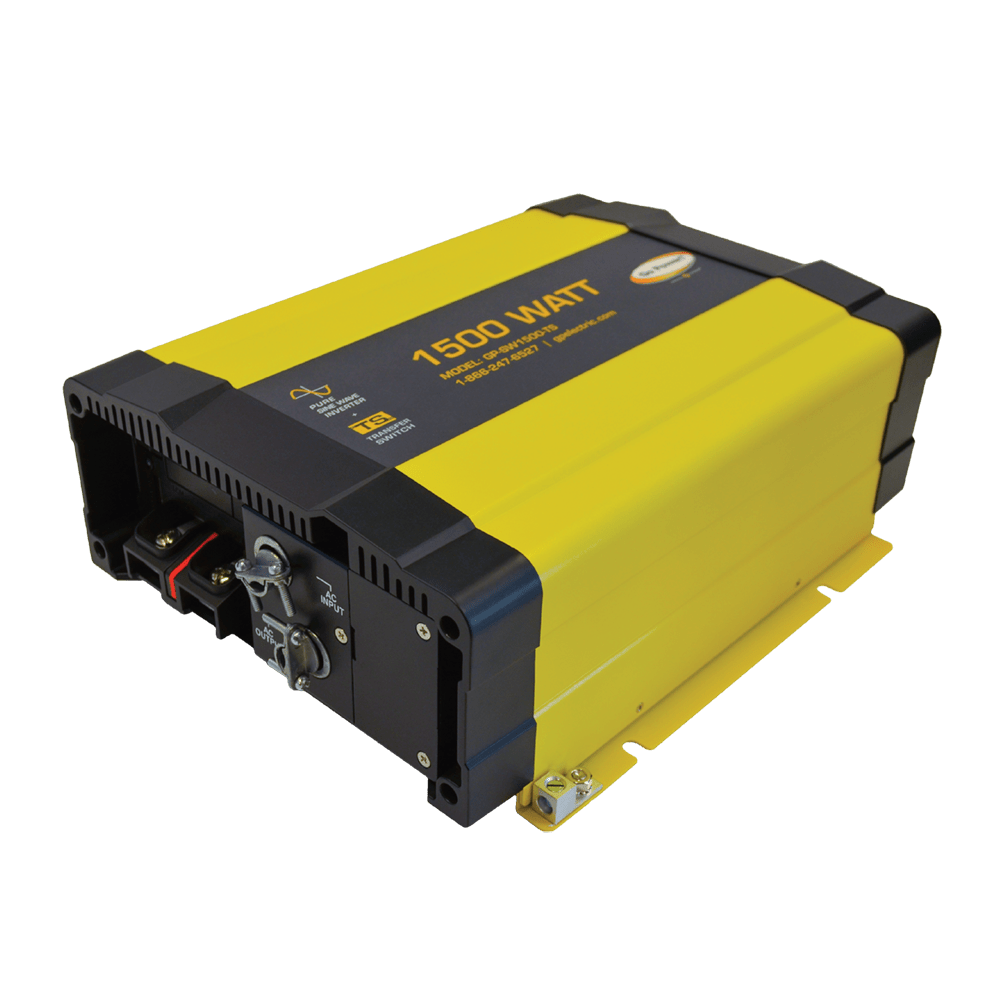Schematic ,,, “Pen & Paper & Photo & Post” ,,, not looking for “Professional Quality here - just a chicken scratch to begin with.
FYI, this is the first post of yours on here where I actually understand your problem & why you are asking questions & that you have an Onan

,,, I feel we are getting somewhere now.
Basically you have parallel chargers operating simultaneously that are not necessarily “playing well with each other” ,,, got it ,,, lets get that sorted out for you

Regarding your solar charger - what does the manual or manufacturer say about disconnecting procedures ??
I typically do not have multiple chargers running simultaneously on my 12vdc systems as I simply don’t need them. But I believe “The Forum” can help sort out your multiple charger issue.
FYI ,,, IIRC “Renogy” has a dual ( alternator / solar ) 50amp & a poor logic IMO of only allowing 25amps each when both are available ,,, & that is in 1 magic box

. What that boils down to is only 25amps from the alternator when on crappy solar days & driving.
So I understand you wanting to know how these things work & how to get them to play nice together.
If you get the info from your Solar Charger, you will discover the “right way” to stop that charger. If it is by opening the PV wire circuit get a decent “
disconnect”;
For my remote cabin, I am considering a “Combiner Box” or a “Breaker” for the “Primary” function as a PV Array “Disconnect”. Currently I have 6 100W panels 3S2P so roughly 600W ( 60 volts @ 10 amps ). I have a Victron 100 | 50 MPPT I consider the combiner box a choice for future upgrades, but...

diysolarforum.com

www.promasterforum.com
@datdude ,,, I am bulk posting here for you to attempt a lot of info as I think you are thirsty for it. The following is important IMO in the “Internet DIYer World” ,,, kinda goes hand in hand with “Trust but Verify” ,,, Anyway in the DIYer Van Design / Build it is like the Wild West of “Blind leading Blind” with surface scratched just learned info & “Parroting” without a very deep knowledge base ,,, Just do this - I did

;
So “Even” with a properly rated “Disconnect” ,,, IMO, it would be “Best Practice” to always use that disconnect after turning the “load” off ,,, thus only using the ability of the “disconnect” under load in an emergency situation. I suppose some could fault me with that perspective ,,, but I would need to know why.
 ;
;
 .
.








